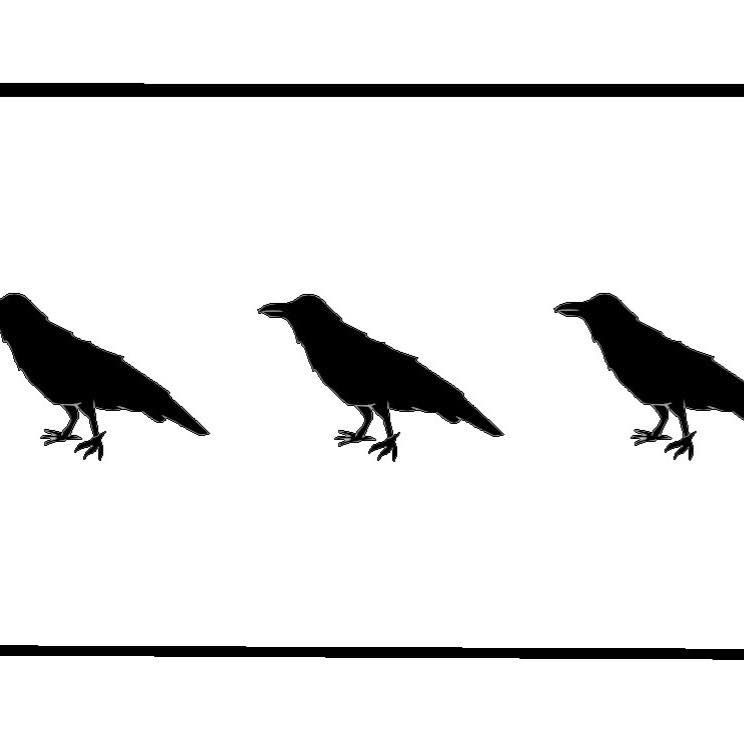MIGRATORY BIRDS
AT SEVERSON DELLS
MIGRATORY BIRDS AT SEVERSON DELLS
These birds may be present at Severson Dells for a short time each year.
Follow this link to the iNaturalist field guide to Migratory Birds of Winnebago County!
List of Services
- Alder Flycatcher
Item Link List Item 1
(Empidonax alnorum)
Alder Flycatchers can weigh 0.4-0.5 oz. and have a wingspan of 8.3-9.4 in. They eat mainly insects and sometimes berries and seeds, and they live in wet shrubby areas. They were previously categorized with Willow Flycatchers, as the only difference between the two species is their call. Their call is similar to that of an Eastern Phoebe, but says “fee-bee-o” instead.
Alder Flycatcher
PHOTO CREDITS: JOHN SCHWARZ
- Bank Swallow
Item Link List Item 2
(Riparia riparia)
Bank Swallows have a wingspan of 9.8-11.4 in. and weigh 0.4-0.7 oz. Their diet consists of aerial insects, and they live in holes in banks near water. Swallows make a twittering noise.
Bank Swallow
PHOTO CREDITS: FRANCESCO VERONESI
- Bay-breasted Warbler
Item Link List Item 3
(Setophaga castanea)
Bay-Breasted Warblers weigh 0.4-0.6 oz and have a wingspan of 7.9-8.7 in. Their diet consists of insects, arachnids, and fruit. Bay-Breasted Warblers live in coniferous forests. There have been occasions when they hybridized with Blackpoll, Yellow-rumped, and Blackburnian Warblers. Their call is a high “seetzy-seetzy-seetzy.”
Bay-breasted Warbler (Setophaga castanea)
PHOTO CREDITS: DAN PANCAMO
- Black-and-White Warbler
Item Link List Item 4
(Mniotilta varia)
Their wingspan is 7.1-8.7 in. and weigh 0.3-0.5 oz. Their diet consists of insects. Black-and-White Warblers live in deciduous and mixed forests. Black-and-White Warblers sing “weezy-weezy-weezy” during mating season.
Black-and-White Warbler (Mniotilta varia)
PHOTO CREDITS: KELLY COLGAN AZAR
- Black-throated Blue Warbler
Item Link
(Setophaga caerulescens)
These warblers weigh about 0.3-0.4 oz. and have a wingspan of 6.7-7.9 in. They mainly eat insects, but also fruits and seeds. Black-throated Blue Warblers live in deciduous and mixed forests with dense undergrowth. Their call is “zoo, zoo, zoo, zoo, zee.”
Black-throated Blue Warbler (Setophaga caerulescens)
PHOTO CREDITS: JOHN SCHWARZ
- Black-throated Green Warbler
Item Link
(Setophaga virens)
They weigh 0.2-0.4 oz. and have a wingspan of 6.7-7.9 in. Their diet consists of insects and berries. Black-throated Green Warblers live in coniferous and mixed forests. Black-throated Green Warblers have a call that sounds like “zoo-zee-zoo-zoo-zee.
Black-throated Green Warbler (Setophaga virens)
PHOTO CREDITS: DAN PANCAMO
- Blackburnian Warbler
Item Link
(Setophaga fusca)
They weigh 0.3-0.5 oz. and have a wingspan of 7.9-8.3 in. Their diet consists of insects, arachnids, and berries. Blackburnian Warblers live in coniferous and mixed forests. They have multiple calls, two of which are “sleet-sleet-sleet-sleet” and “teetsa, teetsa, teetsa, teetsa, tseee.”
Blackburnian Warbler (Setophaga fusca)
Photo Credits: Wikimedia Commons user Mdf
- Blackpoll Warbler
Item Link
(Setophaga striata)
They weigh 0.4-0.5 oz. and have a wingspan of 8.3-9.1 in. Blackpoll Warblers live in coniferous forests, such as the boreal forest of Canada, and deciduous forests. Their diet consists of insects, arachnids, and fruits. Blackpoll Warblers have a very high-pitched call that flickers while it says “seet-seet-seet-seet-seet.”
PHOTO CREDITS: SIMON PIERRE BARRETTE
- Blue-headed Vireo
Item Link
(Vireo solitarius)
They have a wingspan of 7.9-9.4 in. and weigh 0.5-0.6 oz. Blue-headed Vireos live mostly in mixed forests. Their diet consists of insects, berries, and fruits. Blue-headed Vireos’ call sounds like maracas being shaken.
PHOTO CREDITS: ANDY REAGO & CHRISSY MCCLARREN
- Canada Warbler
Item Link
(Cardellina canadensis)
They have a wingspan of 6.7-8.7 in. and weigh 0.3-0.5 oz. Canada Warblers live in mixed forests and near moist areas such as swamps and streams. Their diet consists of insects and arachnids. Their call is a rapid chittering series.
PHOTO CREDITS: JEREMY MEYER
- Cape May Warbler
Item Link
(Setophaga tigrina)
They weigh 0.3-0.4 oz. and have a wingspan of 7.5-8.7 in. Cape May Warblers live in coniferous forests. Their diet consists of insects and fruit. Cape May Warblers have a “seet” call that is repeated 4-8 times
PHOTO CREDITS: JOHN SCHWARZ
- Connecticut Warbler
Item Link
(Oporornis agilis)
They weigh about 0.5 oz. and have a wingspan of about 8.7 in. Connecticut Warblers live in spruce bogs and thickets. Their diet consists of insects, arachnids, and fruit. Though they are named Connecticut Warblers because the first bird was recorded there, Connecticut Warblers are rarely seen in Connecticut. Their call is a chirpy “beecher-beecher-beecher-beech.”
PHOTO CREDITS: JOHN SCHWARZ
- Golden Eagle
Item Link
(Aquila chrysaetos)
They can weigh anywhere from 6.6-13.5 lbs. and have a wingspan of 6-7.2 ft. Golden Eagles are most commonly found in grasslands and cliffsides in Western North America. The Golden Eagle is respected by many cultures, and is the national animal of Mexico, Germany, Austria, Albania, and Kazakhstan. Their call is a high-pitched “kee-kee-kee” or “yelp” noise.
Photo Credits: Tony Hisgett
- Golden-winged Warbler
Item Link
(Vermivora chrysoptera)
Golden-winged Warblers are about 5.1 in. tall and weigh about 0.3-0.4 oz. Golden-winged Warblers live in wet, shrubby areas. Once the young have started to fly, they move to older forests. These birds eat insects and arachnids. Golden-winged Warblers have one of the smallest breeding populations, with 410,000 individuals, but are not yet considered “endangered.” One factor may be competition and hybrid breeding with the Blue-winged Warbler, which either results in a “Brewster’s Warbler” or a “Lawrence’s Warbler.” They make noises such as “tzip,” “zeeee,” and buzzing sounds
PHOTO CREDITS: CALEB PUTNAM
- Gray-cheeked Thrush
Item Link
(Catharus minimus)
They weigh 0.9-1.1 oz. and are 6.3-6.7 in. in length. Gray-cheeked Thrushes live in scrubby areas of the tundra and boreal forest. They eat insects, spiders, and fruit. Gray-cheeked Thrushes sing, like most thrushes, a reedy, flute-like song that descends in pitch.
PHOTO CREDITS: JOHN BENSON
- Hermit Thrush
Item Link
(Catharus guttatus)
Their wingspan is 9.8-11.4 in., and they weigh 0.8-1.3 oz. Hermit Thrushes live in open wooded areas. They eat insects, berries, arachnids, and some amphibians. Hermit Thrushes sing “oh, holy holy, a, purity, purity, eh, sweetly, sweetly.”
PHOTO CREDITS: ALAN SCHMIERER
- Hooded Warbler
Item Link
(Setophaga citrina)
Hooded Warblers weigh 0.3-0.4 oz. and are about 5 in. in length. They live in deciduous and mixed forest undergrowth, and their diet includes insects and arachnids. Their call is “ta-wit ta-wit ta-wit tee-o.”
PHOTO CREDITS: KEN JANES
- Magnolia Warbler
Item Link
(Setophaga magnolia)
Their wingspan is 6.3-7.9 in. and they weigh 0.2-0.5 oz. Magnolia Warblers live in short coniferous forests and some mixed forests. Their diet consists of insects and arachnids. Magnolia Warblers have a call that sounds like “weeta-weeta-weeteo.”
PHOTO CREDITS: WILLIAM H. MAJOROS
- Marsh Wren
Item Link
(Cistothorus palustris)
They weigh 0.3-0.5 oz. and are 3.9-5.5 in. long. Marsh Wrens live in marshes with reeds. Their diet consists of insects, arachnids, and other invertebrates. Marsh Wrens make a high pitched trilling noise.
PHOTO CREDITS: TOM KEORNER
- Nashville Warbler
Item Link
(Oreothlypis ruficapilla)
They can grow to be 0.2-0.4 oz. and have a wingspan of 6.7-7.9 in. Nashville Warblers live in coniferous and deciduous forests. Their diet is predominantly insects. They sing “teebit-teebit-teebit” and “chipper-chipper-chipper.” Nashville Warblers are considered “Climate Threatened,” which means that climate change could potentially threaten their population.
PHOTO CREDITS: WIKIMEDIA COMMONS USER HORMONYONPLANETEARTH
- Northern Harrier
Item Link
(Circus cyaneus)
Northern Harriers are usually 10.6-26.5 oz. and have a wingspan of 3.4-3.9 ft. They live in open areas such as marshes, prairies, and meadows. Their diet consists of small mammals, birds, large insects, reptiles, and amphibians. Its facial features resemble those of owls more than hawks. Their call consists of various “kek” notes.
PHOTO CREDITS: WIKIMEDIA COMMONS USER DFAULDER
- Northern Mockingbird
Item Link
(Mimus polyglottos)
They weigh 1.6-2 oz. and have a wingspan of 12.2-13.8 in. Northern Mockingbirds live in open areas with dense undergrowth such as thickets, brush, and also in urban areas such as neighborhoods and parks. Their diet includes insects, berries, and fruit. Northern Mockingbird are named for their ability to mimic other birds’ songs.
PHOTO CREDITS: WIKIMEDIA COMMONS USER CALIBAS
- Northern Waterthrush
Item Link
(Parkesia noveboracensis)
Northern Waterthrushes live in coniferous forests that are boggy and wet. Their diet consists of insects, fish, and crustaceans. They weigh 0.5-0.9 oz. and have a wingspan of 8.3-9.4 oz. Northern Waterthrushes sing a series of “chee-chee-chee-chip-chip-chew-chew-chew” that accelerates towards the end.
PHOTO CREDITS: JESSICA BOLSER/USFWS
- Orange-crowned Warbler
Item Link
(Oreothlypis celata)
Their average wingspan is 7.5 in. and they weigh 0.2-0.4 oz. Orange-crowned Warblers live in all types of forests and their undergrowth, and their diet includes insects, arachnids, seeds, and fruit. Orange-crowned Warblers make a high pitched trill noise.
PHOTO CREDITS: DAN PANCAMO
- Osprey
Item Link
(Pandion haliaetus)
They weigh about 49.4 to 70.5 oz. with a wingspan of 59.1-70.9 in. Ospreys prefer to live by bodies of water where food is abundant. They eat predominantly fish, but occasionally snack on mammals and other birds. The average lifespan for an Osprey is about 25 years. They communicate by using visual display, flight displays, and giving calls/alarms that are usually high pitched.
Photo Credits: Gareth Rasberry
- Palm Warbler
Item Link
(Setophaga palmarum)
They weigh about 0.2-0.5 oz. and have a wingspan of 7.9-8.3 in. Palm Warblers live in the boreal forest of Canada, and they eat insects, seeds, and berries. Palm Warblers sometimes make a call that sounds like a Chipping Sparrow’s and also make a “seep” noise.
PHOTO CREDITS: KELLY COLGAN AZAR
- Philadelphia Vireo
Item Link
(Vireo philadelphicus)
They weigh 0.4-0.5 oz. and are 4.3-5.1 in. in length. Philadelphia Vireos live mostly in deciduous forests and their edges, and they eat insects and berries. Philadelphia Vireos make a call that is similar to the Red-eyed Vireos: the call says “See me? Here I am. Up here. See me?”
PHOTO CREDITS: KELLY COLGAN AZAR
- Pine Warbler
Item Link
(Setophaga pinus)
Their wingspan is 7.5-9.1 in. and they weigh 0.3-0.5 oz. Pine Warblers live, as their name suggests, in pine forests. They eat insects, arachnids, seeds, fruit, and berries. Pine Warblers sing a series of trills.
Photo Credits: Mickey Estes
- Prothonotary Warbler
Item Link
(Protonotaria citrea)
Prothonotary Warblers live in wet wooded areas such as swamps and flooded forests. Their diet consists of insects, other invertebrates such as snails, fruit, and seeds. Prothonotary Warblers are slightly smaller than Song Sparrows.Their name comes from their bright yellow plumage that resembles the robes of Roman Catholic Prothonotaries. Their call is a series of “tweet-tweet-tweet-tweet-tweet” sounds.
PHOTO CREDITS: DON FAULKNER
- Purple Martin
Item Link
(Progne subis)
Purple Martins weigh 1.6-2.1 oz. and have a wingspan of 15.4-16.1 in. Purple Martins live near water where tree cavities or banks are abundant for burrows. They also roost in nesting boxes. Like other swallows, their diet consists of flying insects. In certain situations, they make calls such as “hee-hee,” “choo,” or “zwack/zweet.”
PHOTO CREDITS: INGRID TAYLAR
- Ruby-crowned Kinglet
Item Link
(Regulus calendula)
Their wingspan is 6.3-7.1 in. and they weigh 0.2-0.4 oz. Ruby-crowned Kinglets live mostly in coniferous forests, but also live in mixed woodlands. Their main diet is insects, and they occasionally eat berries and seeds. Ruby-crowned Kinglets chatter and twitter.
PHOTO CREDITS: FLICKR USER NIGEL
- Sandhill Crane
Item Link
(Grus canadensis)
Their wingspan is around 6.5 ft. long and they can weigh 7.5-10.8 lbs. Some may stand up to 4 ft. tall.Sandhill Cranes can be found in open areas with water such as grasslands, marshes, and wetlands. Their diet consists of seeds, tubers, invertebrates, small amphibians and reptiles, and sometimes small mammals. Sandhill Cranes make loud, low rattling calls that somewhat resemble goose honks at some points.
Photo Credits: Joseph C Boone
- Solitary Sandpiper
Item Link
(Tringa solitaria)
They weigh 1.1-2.3 oz. and grow to be 7.5-9.1 in. in length. Solitary Sandpipers live in wetland areas such as bogs and near ponds. Their diet consists of insects, arachnids, mollusks, and crustaceans. They are one of only 2 species of Sandpipers that lay their eggs in tree nests. Solitary Sandpipers sing a similar “peet-weet” to Spotted Sandpipers that is more shrill.
Photo Credits: Kelly Colgan Azar
- Sora
Item Link
(Porzana carolina)
Soras weigh 1.7-4 oz. and are about 7.9-9.8 in. in height. The Sora lives in wetland areas such as marshes and along the edges of large bodies of water. They eat seeds and invertebrates such as insects and snails. They have multiple calls, some of which are “sor-AH” and a repeated “ker-wee.”
PHOTO CREDITS: MIKE BAIRD
- Spotted Sandpiper
Item Link
(Actitis macularius)
They have a wingspan of 14.6-15.7 in. and weigh 1.2-1.8 oz. Spotted Sandpipers live in areas mostly near freshwater, such as rivers, ponds, and lakes. Their diet consists of insects, fish, and crustaceans. Spotted Sandpipers make “pee-weet” sounds and sometimes trill the “pee” part.
PHOTO CREDITS: JIM HUDGINS/USFWS
- Swainson's Thrush
Item Link
(Catharus ustulatus)
Their wingspan is 11.4-12.2 in. and they weigh 0.8-1.6 oz. Swainson’s Thrushes live in coniferous forests near streams. Their diet consists of insects and berries. Swainson’s Thrushes sing a musical, reedy song that increases in pitch.
PHOTO CREDITS: KELLY COLGAN AZAR
- Tennessee Warbler
Item Link
(Oreothlypis peregrina)
They have an average wingspan of 7.9 in. and weigh about 0.3-0.5 oz. Tennessee Warblers live in coniferous forests, mainly those of Canada while breeding. Their diet consists of insects and berries. Their most common song is a 2-3 note trill set with multiple syllables.
PHOTO CREDITS: JERRY OLDENETTEL
- Virginia Rail
Item Link
(Rallus limicola)
Their wingspan is 12.6-15 in. and they weigh 2.3-3.4 oz. Virginia Rails live in marshes. They eat insects, crustaceans, fish, and seeds. Virginia Rails sing a repeated, clicking “kid-ick” noise.
Photo Credits: Mike Baird
- Western Meadowlark
Item Link
(Sturnella neglecta)
Their wingspan is about 16 in. and they weigh 3.1-4.1 oz. Western Meadowlarks look practically identical to Eastern Meadowlarks, but can be differentiated most easily by their call. Western Meadowlarks live in open areas such as meadows, grasslands, prairies, and agricultural fields, and they eat insects, arachnids, and seeds. Their call is a series of descending gurgles, whereas the Eastern Meadowlark most commonly whistle.
PHOTO CREDITS: BECKY MATSUBARA
- Wilson's Warbler
Item Link
(Cardellina pusilla)
Adults weigh 0.2-0.4 oz. and have a wingspan of 5.5-6.7 in. Wilson’s Warblers live in thickets near water, and they eat insects, arachnids, and berries. Their most common call is a kissy sounding “chip.” Like the Nashville Warbler, Wilson’s Warblers are considered “Climate Threatened.”
PHOTO CREDITS: MICHAEL WOODRUFF
- Worm-eating Warbler
Item Link
(Helmitheros vermivorum)
They weigh 0.4-0.5 oz. and are 4.3-5.1 in. in length. Worm-eating Warblers live in the understory of deciduous forests. Their diet consists of insects such as grasshoppers, caterpillars, and other larvae, but usually does not include earthworms. Worm-eating Warblers make an insect-like trill noise.
PHOTO CREDITS: TOM FRIEDEL/WWW.BIRDPHOTOS.COM
- Yellow-bellied Flycatcher
Item Link
(Empidonax flaviventris)
They have a wingspan of 7.1-7.9 in. and weigh around 0.3-0.6 oz. Yellow-Bellied Flycatchers live in coniferous forests and swamplands. They eat insects and sometimes fruit. They are odd in the sense that they build their nests on the ground as opposed to in a tree. Their calls are a “tu-wee” and a “che-lek.”
PHOTO CREDITS: SIMON PIERRE BARRETTE
- Yellow-bellied Sapsucker
Item Link
(Sphyrapicus varius)
This type of woodpecker can grow to be 1.5-1.9 oz. and have a wingspan of 13.4-15.7 in. Yellow-bellied Sapsuckers live in both deciduous and coniferous forests, and their main diet, as their name suggests, is tree sap, as well as insects and fruit. They make horizontal lines of holes in the trunks of trees. Yellow-bellied Sapsuckers make a “quee-ah quee-ah” noise and also make a mewing noise.
PHOTO CREDITS: DOMINIC SHERONY
- Yellow-rumped Warbler
Item Link
(Setophaga coronata)
Their wingspan is 7.5-9.1 in. and they weigh 0.4-0.5 oz. Yellow-rumped Warblers live mostly in coniferous forests, but also live in mixed forests. Their diet includes insects, berries, fruit, and food from feeders. Yellow-rumped Warblers sing a warble that ends in a high note.
Photo Credits: Kelly Colgan Azar
- Yellow-throated Warbler
Item Link
(Setophaga dominica)
Their average wingspan is 8.3 in. and they weigh 0.3-0.4 oz. Yellow-throated Warblers live in both deciduous and coniferous forests near streams or rivers. Their diet includes insects and arachnids. Yellow-throated Warblers sing “teew-teew-teew-tew-tew-twi.”
PHOTO CREDITS: PETE GUMASKAS
Our Mission: To link people to nature through education and research, in the northern Illinois and southern Wisconsin area. We promote awareness of the natural world, fostering respect, enjoyment, and preservation now and in the future.
Contact us
8786 Montague Rd.
Rockford, IL 61102
Business Hours
- Mon - Sat
- -
- Sunday
- Closed
The Grove Nature Playscape and the trails
are open from sunrise to sunset.
Website Navigation
Business Sponsors

Slide title
Write your caption hereButton
Slide title
Write your caption hereButton
Slide title
Write your caption hereButton
Slide title
Write your caption hereButton
Slide title
Write your caption hereButton
Slide title
Write your caption hereButton
Slide title
Write your caption hereButton
Slide title
Write your caption hereButton
Slide title
Write your caption hereButton
Slide title
Write your caption hereButton
Slide title
Write your caption hereButton
Slide title
Write your caption hereButton
Slide title
Write your caption hereButton
Slide title
Write your caption hereButton
Slide title
Write your caption hereButton
Slide title
Write your caption hereButton
Slide title
Write your caption hereButton
Slide title
Write your caption hereButton
Slide title
Write your caption hereButton
Slide title
Write your caption hereButton
Slide title
Write your caption hereButton
Slide title
Write your caption hereButton
Slide title
Write your caption hereButton
Slide title
Write your caption hereButton
Slide title
Write your caption hereButton
Slide title
Write your caption hereButton
Slide title
Write your caption hereButton
©2025 | All Rights Reserved | Severson Dells Nature Center
Website powered by Neon One

